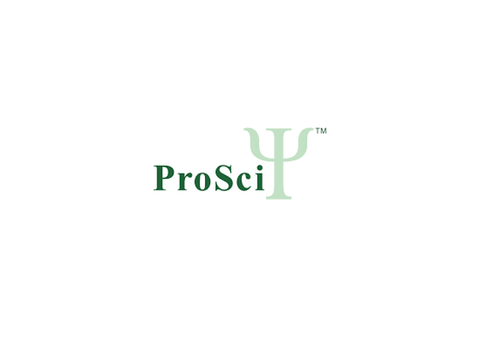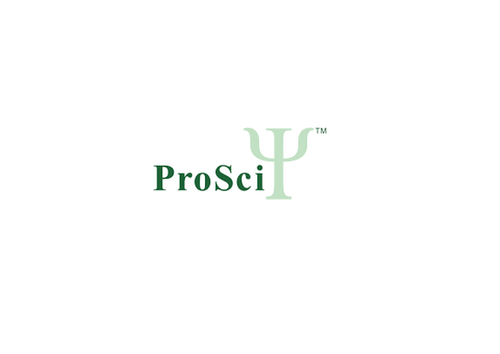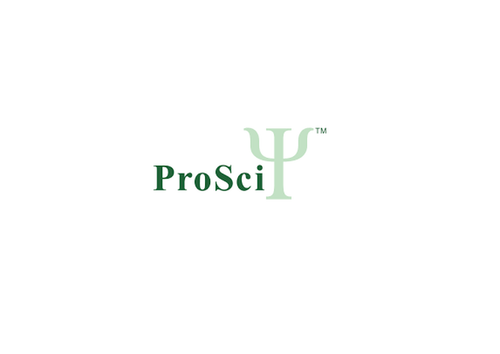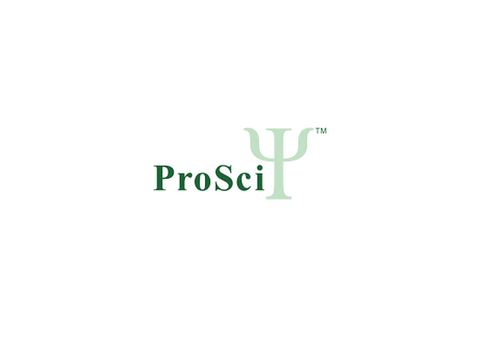Product Description
SMAD2 Antibody, KO Validated | 23-117 | ProSci
Host: Rabbit
Reactivity: Human, Mouse, Rat
Homology: N/A
Immunogen: A synthetic peptide corresponding to a sequence within amino acids 1-100 of human SMAD2 (NP_001003652.1) .
Research Area: Cancer, Cell Cycle, Growth Factors, Signal Transduction, Stem Cell, Transcription
Tested Application: WB, IHC, IF
Application: WB: 1:500 - 1:2000
IHC: 1:50 - 1:200
IF: 1:50 - 1:200
Specificiy: N/A
Positive Control 1: K-562
Positive Control 2: SW480
Positive Control 3: HeLa
Positive Control 4: HL-60
Positive Control 5: N/A
Positive Control 6: N/A
Molecular Weight: Observed: 60kDa
Validation: Antibody is Knockout validated.
Isoform: N/A
Purification: Affinity purification
Clonality: Polyclonal
Clone: N/A
Isotype: IgG
Conjugate: Unconjugated
Physical State: Liquid
Buffer: PBS with 0.02% sodium azide, 50% glycerol, pH7.3.
Concentration: N/A
Storage Condition: Store at -20˚C. Avoid freeze / thaw cycles.
Alternate Name: SMAD2, JV18, MADH2, MADR2, JV18-1, hMAD-2, hSMAD2
User Note: Optimal dilutions for each application to be determined by the researcher.
BACKGROUND: The protein encoded by this gene belongs to the SMAD, a family of proteins similar to the gene products of the Drosophila gene 'mothers against decapentaplegic' (Mad) and the C. elegans gene Sma. SMAD proteins are signal transducers and transcriptional modulators that mediate multiple signaling pathways. This protein mediates the signal of the transforming growth factor (TGF) -beta, and thus regulates multiple cellular processes, such as cell proliferation, apoptosis, and differentiation. This protein is recruited to the TGF-beta receptors through its interaction with the SMAD anchor for receptor activation (SARA) protein. In response to TGF-beta signal, this protein is phosphorylated by the TGF-beta receptors. The phosphorylation induces the dissociation of this protein with SARA and the association with the family member SMAD4. The association with SMAD4 is important for the translocation of this protein into the nucleus, where it binds to target promoters and forms a transcription repressor complex with other cofactors. This protein can also be phosphorylated by activin type 1 receptor kinase, and mediates the signal from the activin. Alternatively spliced transcript variants have been observed for this gene.
 Euro
Euro
 USD
USD
 British Pound
British Pound
 NULL
NULL



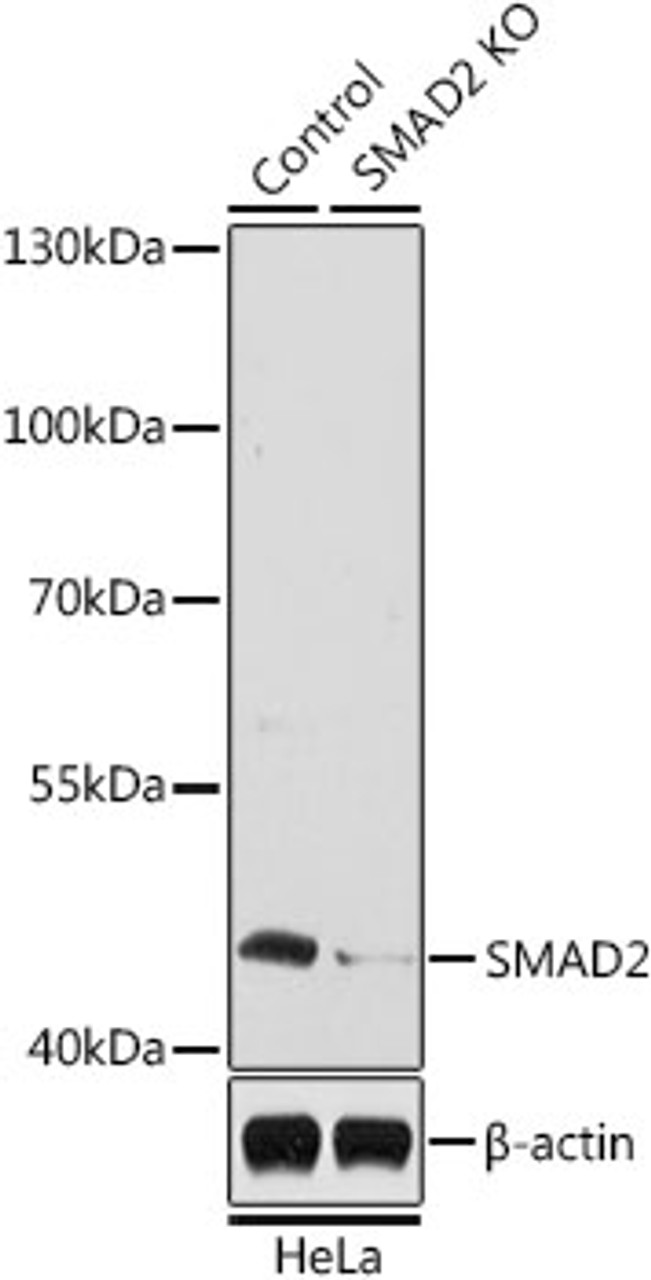




![[KO Validated] SMAD2 Polyclonal Antibody [KO Validated] SMAD2 Polyclonal Antibody](https://cdn11.bigcommerce.com/s-452hpg8iuh/images/stencil/500x659/products/295493/455630/sab-signalway-antibody__92073.1641690747__20278.1641691418.gif?c=2)
![[KO Validated] Smad2 Rabbit pAb [KO Validated] Smad2 Rabbit pAb](https://cdn11.bigcommerce.com/s-452hpg8iuh/images/stencil/500x659/products/396356/574829/unnamed-776x1024__91681.1646254488__92229.1646256048__48120.1646652395.png?c=2)
![[KO Validated] Smad2 Rabbit mAb [KO Validated] Smad2 Rabbit mAb](https://cdn11.bigcommerce.com/s-452hpg8iuh/images/stencil/500x659/products/396355/574828/unnamed-776x1024__91681.1646254488__92229.1646256048__58999.1646652395.png?c=2)
